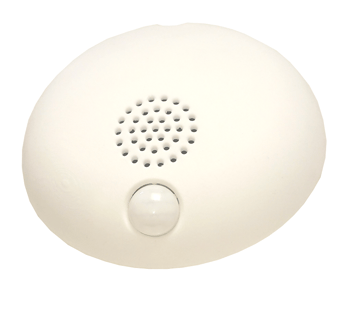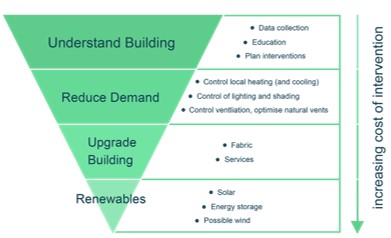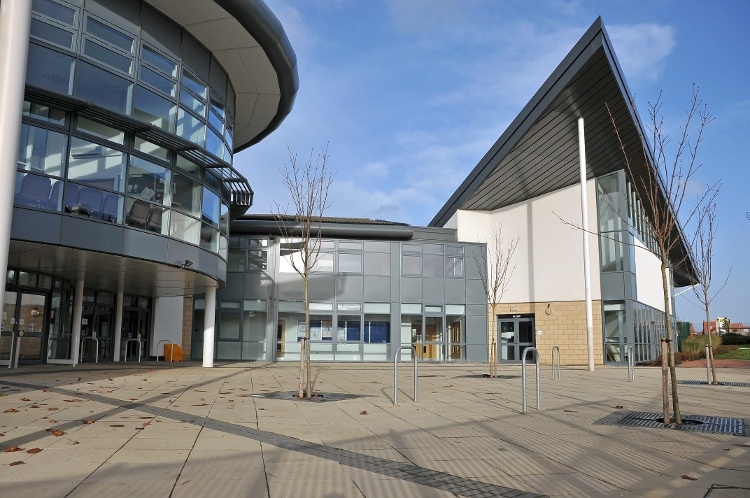
Keeping schools heated this winter
ventilation
heating
Efficiency
Energy
Zonal control
Gas
Net zero
BMS
School
Temperature
Thermal comfort
Classroom
Air quality
IAQ
Carbon dioxide
HVAC
maintenance
The Atamate Schools project is intended to meet the following objectives for schools:
- Reduce energy costs
- Automate heating control
- Monitor air quality.
We calculate that the system we propose to install in each classroom will pay for itself in 1-3 years.
 |
Last autumn, we wrote about what we called the gas price shock, caused by rising demand for natural gas in China and deteriorating relations between Russia and the European Union. A year on, we have to admit that we were optimistic to call it a ‘shock’ because the term implies the price rise would be temporary. A year on, inflated energy prices show no sign of deflating.
Our view, then and now, is that the ultimate solution to rising energy prices is to replace imported gas with renewable electricity, which is both generated and consumed domestically and so is insulated from global market fluctuations. However, the heating demands of winter are only a few weeks away and much as we’d like to lead the degasification of Britain, there’s only so much a small firm like Atamate can do.
We can offer a shorter-term solution: reducing a building’s energy demand by automating its services. We have shown the Atamate Building Operating System (atBOS) can deliver substantial savings in the domestic sector but the same principle applies to any type of building. Recently, we initiated the Atamate Schools project to develop ways for schools to cut heating costs without requiring extensive capital expenditure.
Cutting energy use in schools
Schools are among the most challenging buildings to plan services for because a typical school is many things at once. Other than the home, it is the environment that children spend the most time in. For the staff, it is a workplace and both the pupils and the staff spend their time in rooms with many different functions such as workshops, laboratories, kitchens, staffrooms, gyms and whatever else the school needs to function.
Our starting point was that any school-based project needs to consider the following factors:
 |
- The intersecting functions of a school building make it subject to the many different regulations and requirements summarised in the BB101 guidelines published by the Education and Skills Funding Agency (ESFA).
- A school’s building services require every room to be well ventilated and thermally comfortable. What that means will vary according to the type of room; a food technology room full of gas burners has a higher ventilation requirement than a classroom, while the thermal comfort level for a classroom is several degrees higher than for a gym.
- Many schools are committed to achieving net zero greenhouse gas emissions by 2030 under the Let’s Go Zero
- Many schools have committed to the environmental and wellbeing standards of the BREEAM and WELL
A further complication is that schools operate within a very limited budget. Meeting operational costs is a struggle at the best of times, and this winter is emphatically not going to be the best of times. The Department of Business, Energy and Industrial Strategy (BEIS) has promised six months of financial support for schools but, at the time of writing, has not stated how much or whether it will be enough to make a practical difference.
The atBOS (Atamate Building Operating System) is intended as a comprehensive system for monitoring a building’s indoor environment and automating its services. However, we recognise that few schools will be able to access the funds to install the complete atBOS. The Atamate Schools project was guided by the Atamate Energy Hierarchy, which prioritises low-cost ‘simple wins’ that often return substantial savings and only considers the expense of major renovations if the likely savings are justified. We concluded that for most schools, installing a slimmed-down atBOS would offer a low-cost simple win.
We calculate that in most schools, the slimmed-down atBOS will deliver sufficient savings to pay for its installation within three years which is well within atBOS’s lifespan. If energy costs continue to rise, the payback time will be shorter. We would be happy to share our calculations if requested using the form below.
|
|
The Atamate energy hierarchy |
Atamate’s simple win for schools
The Atamate Schools approach is to install the following units in every classroom, and in any other room in which it is required:
- Sensor unit: the Atamate sensor unit continually monitors temperature, occupancy and air quality.
- Temperature control: Each room’s heating unit will be placed under atBOS control. Most schools use a central heating system powered by a gas boiler, in which case a room’s temperature will be controlled by thermostatic radiator valves. If required, atBOS can also control air conditioning units.
- Hub: A central hub integrates the data from the sensor units and uses it to operate any automated systems. It also uploads the data to cloud storage, allowing it to be viewed in realtime or analysed later.
Once atBOS is installed in a classroom, it can be programmed to control heating in various ways:
- Setpoint: A setpoint for thermal comfort is predefined for each room and atBOS switches off the heating when it is reached, which avoids wasting energy on overheating a room.
- Occupancy: The sensor unit detects when a room is occupied and raises the temperature to the thermal comfort level. More importantly for energy efficiency, it detects when the room is unoccupied and allows the temperature to fall without needing anyone to remember to turn it off.
- Calendar controls: The heating may be programmed to engage or disengage at a predefined time. Calendar controls are likely to be valuable for a large classroom with a single radiator, which may take some time to heat to the thermal comfort level. Calendar controls can automatically bring a classroom to the thermal comfort level by the time the class arrive, removing any incentive to leave the heating on overnight.
- Manual control: The atBOS system can be controlled from any internet-enabled device, including smartphones, tablets and computers, enabling the teacher to manually control the temperature if required. Manual control includes a ‘boost’ function that raises the temperature above the usual thermal comfort level for a predefined time period, which can be useful if a class has been outdoors in particularly cold weather.
 |
| The Atamate sensor unit |
Air Quality
While the atBOS Schools project is primarily intended to get heating costs under control, the sensor unit also monitors the air quality, which directly impacts the wellbeing and performance of both the pupils and the teaching staff.
Air quality is usually measured by carbon dioxide concentration which is usually around 400 parts per million (ppm) in the atmosphere. In a closed room full of exhaling children, the carbon dioxide concentration can rise rapidly. The BB101 document sets certain stipulations for acceptable carbon dioxide levels in schools:
- Daily average should not exceed 1,000ppm during occupied hours.
- Concentration should not exceed 2,000ppm for more than 20min per day.
- In a new build, concentration should not be more than 800ppm higher than the external level for more than half the time in which the school is occupied which, in practice, would usually mean 1,200ppm.
- Following a refurbishment, concentration should not be more than 1,350ppm higher than the external level for more than half the time in which the school is occupied which, in practice, would usually mean 1,750ppm.
Based on the many studies of how carbon dioxide levels impact the performance of school pupils, there is a case to be made that BB101 is not stringent enough. A recent review of those studies concluded that reducing carbon dioxide concentration from 1,500ppm to 900ppm delivers an 11% improvement in cognitive function and that cutting levels from 2,400ppm to 900ppm would deliver a 5% improvement in national test scores.
 |
| Plots of classroom carbon dioxide concentration against daily attendance (left) and performance in national and aptitude tests (right). Wargocki et al (2020) Build Environ 173:106749 |
A 2014 study of Aberdeen schools found that those improvements may be worth pursuing; carbon dioxide levels were above the BB101 1,000ppm recommendation more often than not and occasionally rose over 4,000ppm.
Moreover, every 100ppm increase in carbon dioxide concentration reduced annual attendance by 0.2%. That’s equivalent to every child missing a day of school every 2.5 years but the figure is an average across a whole school. In practice, the effect is likely to fall disproportionately on children with underlying health conditions like asthma. That’s because the absences are unlikely to be due to the carbon dioxide itself but because high levels of carbon dioxide indicate poor ventilation, and a poorly ventilated room is highly conducive to the transmission of cold viruses that are likely to be more severe in children with conditions like asthma.
For a school with mechanical ventilation, atBOS can automate the ventilation system based on a pre-defined setpoint level of carbon dioxide. However, most classrooms are ventilated by simply opening the windows, in which case an atBOS sensor will enable a teacher to keep an eye on the carbon dioxide level. The teacher will know when the windows need to be opened but also when they can be closed, minimising the heat loss during winter.
While children spend most of their time in classrooms, air quality monitoring is equally if not more valuable in other types of room. In a food tech room, for example, carbon dioxide is often produced not only by teachers and pupils but by gas burners. Realtime monitoring can help a teacher decide when to open and close windows to balance thermal comfort against air quality.
The ongoing COVID-19 pandemic has focused attention on the problem of airborne viruses being transmitted in classrooms, and a University of Leeds project is currently evaluating two approaches to disinfecting classroom air:
- High efficiency particulate air (HEPA) filters physically remove particles and droplets from the air.
- Germicidal ultraviolet light disinfects air passed through a closed unit.
Both approaches use electric fans to circulate classroom air through a closed unit, which imposes an energy cost that could be minimised by atBOS occupancy control.
Summary
The atBOS Schools project is essentially a simplified building management system with the following key features:
- Automated heating optimises thermal comfort and improves energy efficiency.
- Ongoing monitoring of thermal comfort and air quality can be used for certifications like WELL and BREEAM.
- Teachers may access indoor environment data in realtime and take direct control of heating and any other automated systems.
- Potential to extend atBOS to automate other services if required, either at the time of installation or later.
- Payback in no more than three years for a typical school.
Ask us for more
If you’d like to know more about the atBOS Schools project, including how we calculate the three-year payback time or whether it might be applicable for your school, ask us on the form and we'll be happy to discuss it.


![Lifeskills (Jose Kevo [CC / Flickr]): a school food tech room.](https://www.atamate.com/hs-fs/hubfs/FoodTech.jpg?width=1024&name=FoodTech.jpg)
